“Content marketing is no longer an option but a necessity.”
Right from creating and sharing valuable material to attracting, engaging, and converting customers, building a strong content marketing strategy is crucial for successful marketing today.
To stay competitive, you need to diversify your content marketing strategies and explore different methods.
When developing a content marketing strategy, it’s important to consider where you will promote your content.
By creating appealing and valuable content, you can build meaningful connections with your audience and drive desired actions.
In this blog post, you are going to find out the value of content marketing methods and how they can help you connect with more people.
Table of Contents
ToggleTable of Index
- What is Content Marketing?
- The Importance of Content Marketing in Today’s Landscape
- Key Elements for an Effective Content Marketing Strategy
- Procedure for Building a Perfect Content Marketing Strategy
- Successful Examples of Content Marketing Campaigns
- The Relationship between Content Marketing and Brand Building
- Content marketing is a means to the desired end
- Organizational Changes in content marketing strategy
- Content marketing strategy as an agent of change
- Unveiling the Challenges of Content Marketing
- Common Mistakes to Avoid
- Strategies for Overcoming Challenges and Avoiding Pitfalls
- Bonus point: The Importance of a Well-Crafted Content Marketing Strategy
- Conclusion
What is Content Marketing?
Content marketing is an approach that focuses on creating and distributing valuable information to a specific audience.
Unlike traditional advertising, content marketing aims to provide value to the audience rather than directly promoting products or services.
By delivering informative and engaging content, you can build trust, establish thought leadership, and nurture long-term customer relationships.
Check out this video of Alex Hormozi discussing his strategy for gaining 1,000,000 followers in 6 months. It provides insights into social media and content marketing strategies for entrepreneurs aiming to grow their brands organically.
Content Creation, Content Optimization, Content Distribution, Content Analysis, and finally Content Refinement. These are the steps you definitely will need for your content marketing strategies.
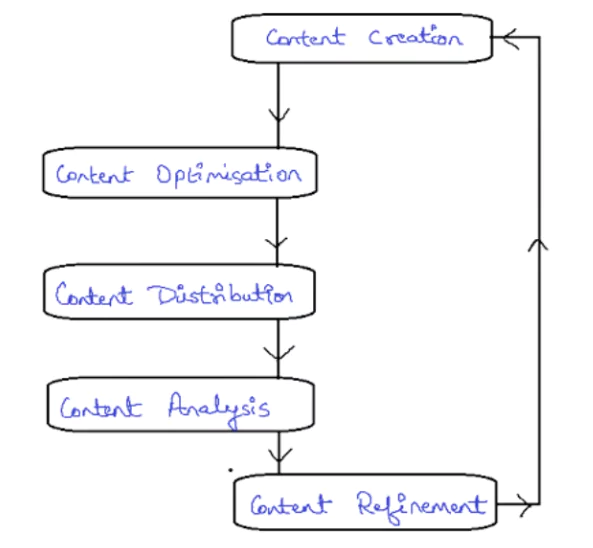
And this cycle repeats as you refine, then create new content based on your analysis.
Related article: 13 best ways to improve your SEO copywriting
The Importance of Content Marketing in Today’s Landscape
Content marketing has become an integral part of modern marketing strategies.
Its significance lies in the ability to engage and connect with audiences on a deeper level.
Here are some key reasons why content marketing is crucial in today’s landscape:
1. Building Trust and Authority:

The authenticity of your business can prove you as a trusted source of information.
This positions you as an industry leader and builds credibility among your target audience.
For building trust you need to –
- Make your content relevant.
- Prioritize content value.
- Share brand stories.
- Practice ethics and honesty.
- Utilise targeted advertising.
We will deal with all these in detail later in the article.
2. Enhancing Brand Awareness:

Content marketing allows you to showcase your expertise and unique value proposition.
Consistently delivering high-quality content increases brand visibility and helps attract and retain customers.
For brand awareness, you need to
- Understand Your Target Audience
- Analyzing Audience Data to Improve Content Performance
- Draft Your Content Strategy
- Promotion on social media platforms
3. Driving Organic Traffic:
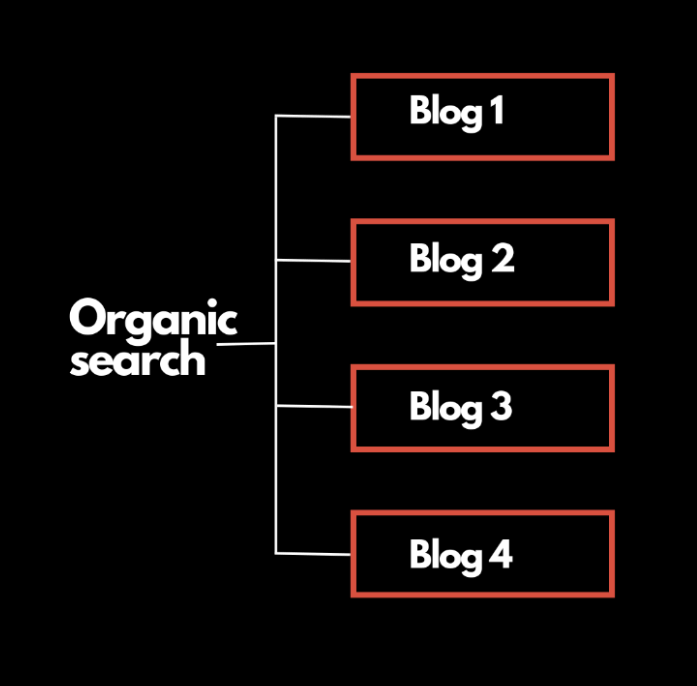
Well-optimised content can improve a business’s search engine rankings, increasing organic traffic.
By targeting relevant keywords and delivering valuable content, you can attract users actively seeking information.
Bring organic traffic to your website by
- Building authoritative backlinks
- Using different Social media platforms for brand awareness
- Focusing on On-Page SEO
- Focusing on Off-Page SEO
4. Supporting the Customer Journey:
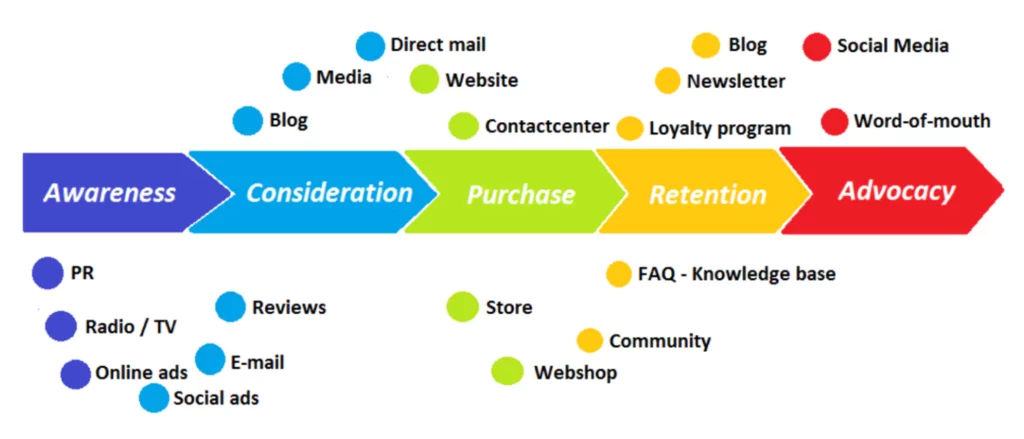
Content marketing plays a vital role at different stages of the customer journey.
From awareness to consideration and ultimately conversion, strategically crafted content can guide and nurture prospects toward making purchasing decisions.
Better content marketing strategies can hold up your ranking and website traffic.
The Customer Journey usually stands within these five steps.
- Awareness
- Interest
- Consideration
- Intent
- Purchase/ Action
Related article: Customer Journey- How a Holistic Strategy drives profitable business growth
5. Fostering Customer Loyalty:
Engaging and valuable content keeps customers connected to a brand even after making a purchase.
By providing ongoing value and nurturing relationships, you can foster customer loyalty and drive repeat purchases.
You need to combine all your knowledge about content marketing to foster your customer’s loyalty level. You need to
- Understand your customers.
- Establish a consumer loyalty program.
- Create a referral program.
- Use your abilities and values to your advantage.
- Use social media to interact with customers.
- Encourage customers to provide comments.
- Save customer information.
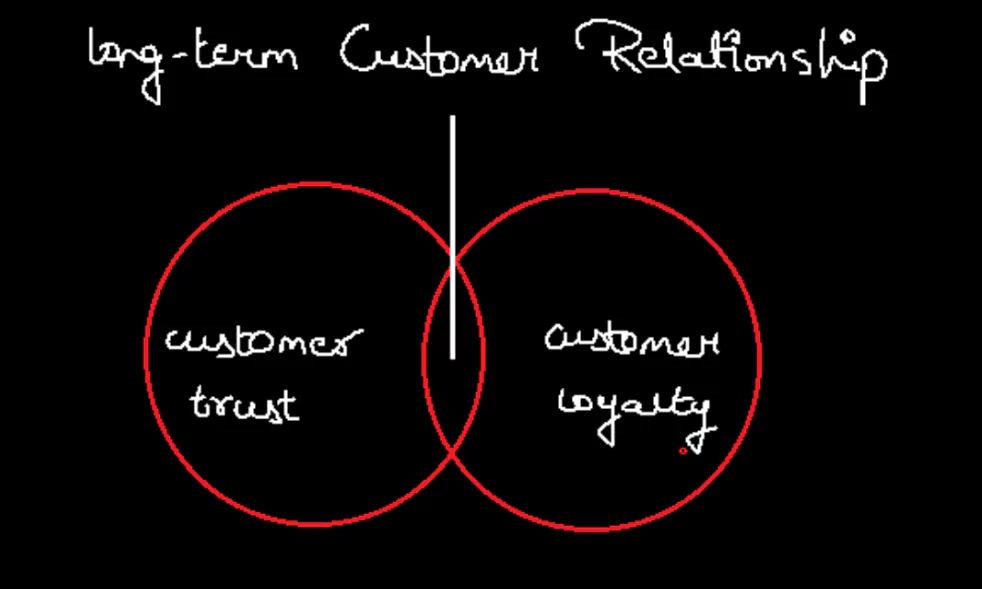
Key Elements for an Effective Content Marketing Strategy
To truly unleash the power of a content marketing strategy, you must consider various elements and techniques. Here are some key components to focus on:
1. Content Creation Strategy:
Developing a well-defined plan for content creation is crucial.
This includes identifying topics, conducting keyword research, and establishing a consistent brand voice and style.
You can have a look at how the importance of Content creation strategy is gaining the interest of every marketing team with the below graph.

2. Content Distribution Strategy:
Determining the best channels and platforms for distributing content is vital.
Leveraging social media, email marketing, guest blogging, and other relevant avenues are a part of the content distribution strategy.
Have a look over the content distribution strategy of HubSpot. The Ultimate Guide to Content Distribution.
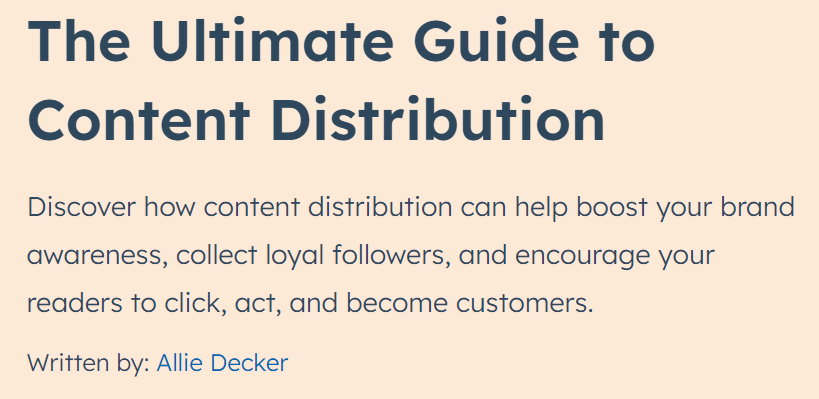
3. Content Promotion Strategy:
Promoting content to increase visibility and reach is essential.
This involves utilizing various tactics, such as paid advertising, influencer partnerships, and social media promotion.
In the practical world, most marketers go 30% with paid advertising channels, 30% with influencing partnerships, and 40% of the promotion is done with social media platforms.
It’s pretty clear that like 90% of the companies, you too struggle with your content promotions.
Therefore, here is 3 ways to maximize your content Reach.
Content Promotion Strategies | 3 Ways To Maximize Your Content’s Reach
4. Content Optimisation Strategy:
Optimising content for search engines and user experience is critical.
This includes incorporating relevant keywords, improving page load speed, and ensuring mobile responsiveness.
Google’s support team themselves makes a strong statement about the importance of mobile optimisation. Check out the guidelines here – Google Support.
5. Content Measurement Strategy:
You need to measure the effectiveness and impact of your content for ongoing improvement.
You can consider here, tracking key metrics such as website traffic, engagement, and conversion rates.
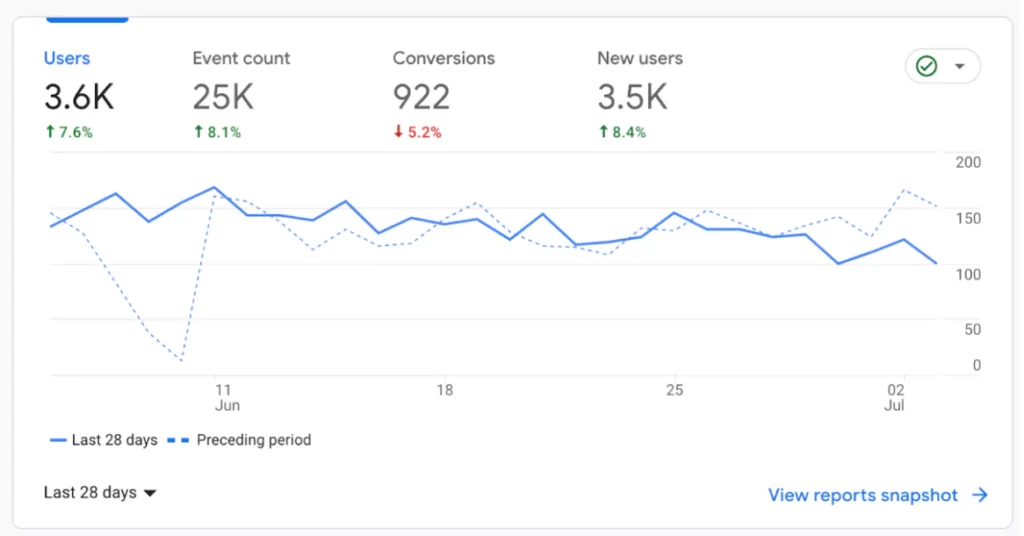
6. Content Repurposing Strategy:
Maximizing the value of content by repurposing it across different formats and platforms.
This includes transforming blog posts into videos, infographics, or podcasts.
We used YouTube for this. Have a look –

7. Content Curation Strategy:
Curating and sharing relevant content from external sources can provide additional value to your audience.
This shows your brand is a valuable resource and helps establish authority.
Including external backlinks in your blogs, videos, and newsletters for this purpose. Like we do-

8. Content Storytelling Strategy:
Harnessing the power of storytelling in content can captivate and resonate with the audience on a deeper level.
By crafting compelling narratives, you can create emotional connections.
As the greatest storyteller Coco-Cola did,
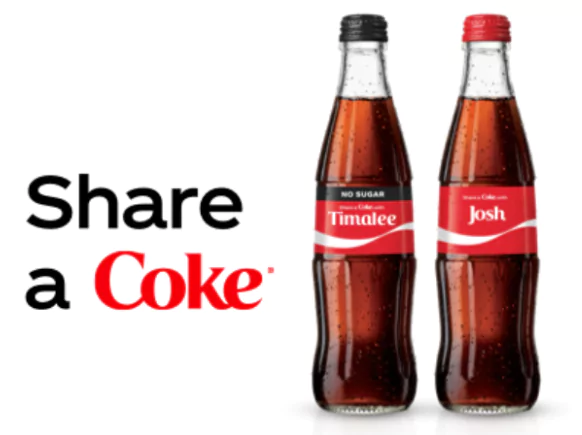
Check the next section of this blog to know more insights on Coke’s “Share a Coke” campaign.
9. Content SEO Strategy:
Implementing effective SEO practices within content can improve your visibility in search engine results.
Just optimising meta tags and headers, compelling titles, and incorporating internal and external links can build a better SEO strategy for your content.
For this, try out doing what we did-

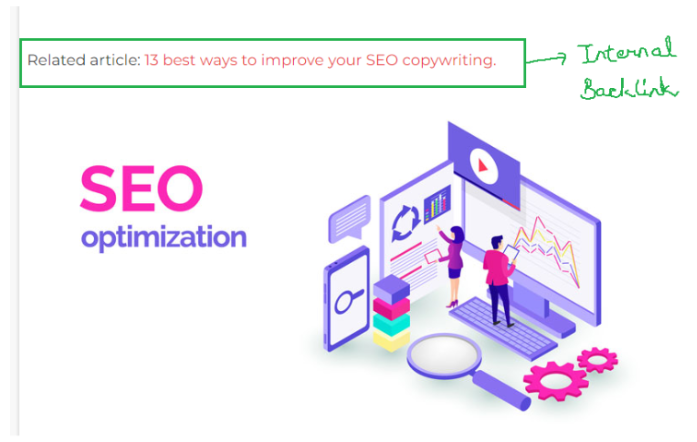

10. Content Social Media Strategy:
Leveraging social media platforms to amplify content reach and engage with the audience.
This involves creating shareable content, utilizing relevant hashtags, and fostering community engagement.
Just go through our LinkedIn posts to get an idea about content strategies, hashtags, and engagement building.
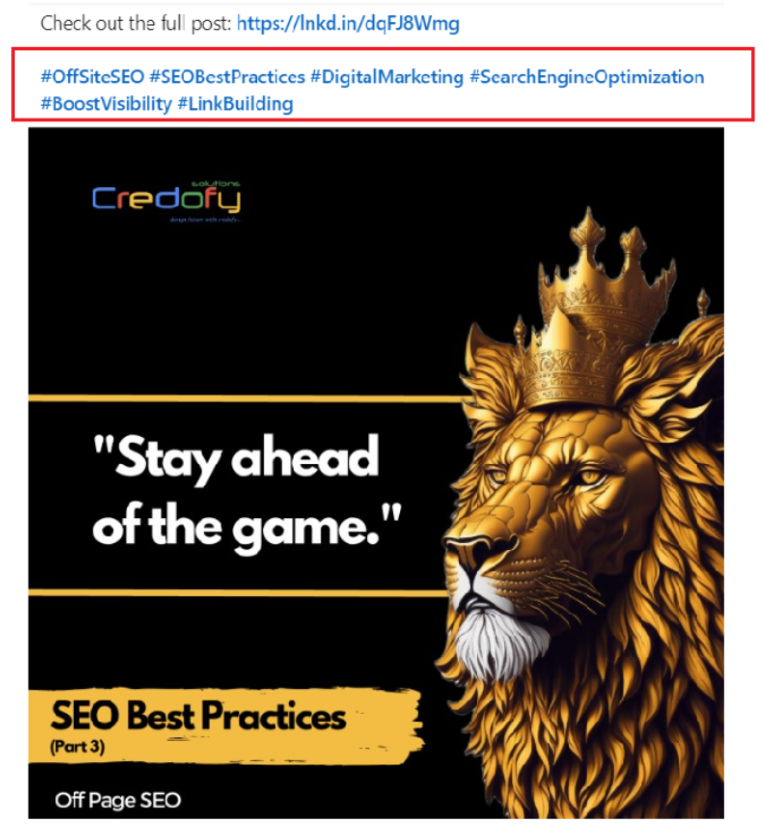
11. Content Email Marketing Strategy:
Utilizing email marketing to deliver targeted and personalized content directly to the audience.
This includes segmenting email lists, crafting compelling subject lines, and optimising email content.
Check this “Content Marketing for Beginners: Complete Guide” by Ahrefs.
Procedure for Building a Perfect Content Marketing Strategy
1. Define Clear Objectives
Every successful content marketing strategy begins with clear objectives.
Setting specific and measurable goals is crucial to align your efforts and evaluate success.
Whether it’s generating leads, increasing brand awareness, driving website traffic, or improving customer engagement, defining objectives provides you with a framework for developing targeted content and measuring its effectiveness.
Related article: Get amazing tips about marketing goals
2. Identify the Target Audience
To create content that resonates with your audience, it’s essential to identify and understand their needs, preferences, and pain points.
Conducting thorough audience research enables you to develop buyer personas and tailor content accordingly.
By addressing the specific challenges and interests of the target audience, content becomes more relevant, engaging, and valuable.
As per Neil Patel “Stop targeting keywords and start targeting customers.”
Now you know how much your target audiences are important to you. #realitycheck
During our research on content marketing, we found Seth Godin’s secrets to find an ideal audience. Check it out – Seth Godin: To Find Your Audience, Ask Yourself This Question
3. Develop a Content Plan
A comprehensive content plan outlines the types, formats, and distribution channels for delivering content.
It involves conducting keyword research to identify topics of interest, creating an editorial calendar, and setting a consistent publishing schedule.
The plan should encompass a variety of content formats, including blog posts, articles, videos, infographics, podcasts, and social media updates, catering to diverse audience preferences.
Related article: How to Create a Social Media Calendar to Plan Your Content.
4. Create High-Quality Content
The cornerstone of any effective content marketing strategy is high-quality content.
Valuable, well-researched, and well-written content establishes credibility, builds trust, and positions your brand as an authority in the industry.
Content should be informative, engaging, and provide actionable insights.
Incorporating storytelling techniques can further captivate the audience and make the content memorable.
Related article: 17 copywriting tips that’ll compel your audience to make a purchase
5. Optimize Content for Search Engines
Search engine optimization (SEO) plays a crucial role in content marketing.
By optimising content for relevant keywords, you can increase your visibility in search engine results and drive organic traffic.
Keyword research, on-page optimization, and link building are key SEO techniques to enhance content discoverability and improve search engine rankings.
6. Leverage Social Media Channels
Social media platforms offer immense potential for amplifying content reach and engaging with the target audience.
A perfect content marketing strategy utilizes social media channels strategically to promote content, encourage social sharing, and foster community engagement.
You need to be very specific about your content format and a consistent brand voice to connect effectively with your ideal audience.
7. Encourage Audience Interaction
Interactive content fosters a deeper level of engagement and encourages audience participation.
Including elements such as polls, quizzes, surveys, and interactive infographics can capture attention, generate user feedback, and create a sense of involvement.
By involving the audience in the content experience, you can cultivate stronger relationships and gain valuable insights.
8. Measure and Analyze Performance
You would certainly know this,
Regularly monitoring and analyzing the performance of your content is crucial to refining the content marketing strategy.
Utilize web analytics tools to measure key metrics such as website traffic, conversion rates, social media engagement, and content reach.
By identifying what works and what doesn’t, you can make data-driven decisions and optimize your content for better results.
A well-defined content marketing strategy provides a roadmap for brands to create valuable, engaging, and relevant content that attracts and retains their target audience.
Successful Examples of Content Marketing Campaigns
In the realm of content marketing, successful campaigns have the power to captivate audiences, generate engagement, and drive meaningful results.
Let’s explore three exemplary content marketing campaigns that have left a lasting impact on their target audience, showcasing the key elements and strategies that made them successful.
Example 1: Coca-Cola’s “Share a Coke” Campaign
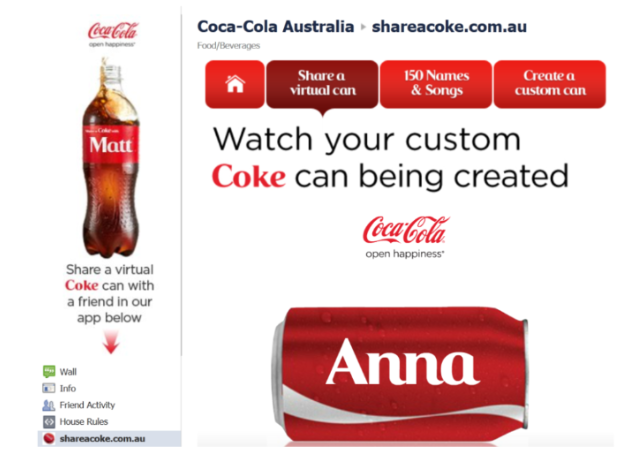
Imagine,
Why should people choose you when 30 other companies sell the same product as you do?
Here comes the game of considering content marketing strategy and building a Brand story.
Creating a compelling story that deeply resonates with your intended audience will help you to sell your product at 2X the price.
Just like Coca-cola did.
One of the greatest storytellers, Coca-Cola has been telling brand stories for the past 100 years.
No matter if their customers are local or global, Iron Man or Hulk fans, they have all been captivated by their incredible narrative structure.
They have always tried to evolve their stories as per their target audience to make them more engaging but at the same time, they have focused to maintain their simplicity.
They involve Coca-Cola fans in creating stories with them. In their advertisement, they try to show different ways how coke can pair out with food.

As a result, their revenue in 2022 increased by 11.25% over 2021.
Marketing is no longer about products; it is about the stories we tell and how our brands make people feel.
Actually, brands that provide a superior customer experience generate 5.7 times more revenue than competitors who lag in providing the same.
Personalization as a Strategy
- Emotional Connection: By incorporating personal names, the campaign aimed to evoke emotions and foster a sense of personal connection with the brand.
- User-generated Content: Coca-Cola encouraged consumers to share pictures and stories of their personalized bottles on social media, effectively turning customers into brand ambassadors.
- Amplifying Reach: The campaign leveraged social media platforms to amplify its message, utilizing hashtags and engaging with user-generated content.
Related article: Case Study On Coca Cola ‘Share A Coke Campaign
Example 2: Airbnb’s “Live There” Campaign

It’s time that travel has become more than just visiting new places, it’s about experiencing the local culture and living like a local.
Airbnb recognized this growing trend and launched its innovative “Live There” campaign in 2016, under the leadership of Brian Chesky, the chairman of Airbnb.
The company realised that people were increasingly seeking authentic experiences and desired a deeper connection with the places they visited.
Therefore, Airbnb’s “Live There” campaign focused on the idea that when you travel, you should live like a local.
Through compelling storytelling as part of their content marketing strategy, Airbnb showcased the potential for travellers to create meaningful connections and memories.
The company encouraged hosts and guests to share their experiences through photos, videos, and personal stories.

By highlighting real-life stories, Airbnb tapped into the power of social proof, making potential users more likely to trust the platform and book their stays.
Considering its content marketing strategy, Airbnb effectively generated revenue of $2.6 billion in 2019, showcasing the campaign’s impact.
Related article: A case study on Airbnb’s “Live There” Campaign.
Fostering Trust and Adventure, the campaign emphasised-
- Local experiences: The campaign featured real stories of Airbnb hosts and guests, showcasing the unique experiences and connections made through the platform.
- Authenticity and Diversity: By highlighting a diverse range of destinations and local cultures, Airbnb emphasized its commitment to providing authentic travel experiences.
- Social Proof and customer loyalty: The campaign incorporated user-generated content and testimonials, showcasing the positive experiences and trust established by the Airbnb community.
These examples demonstrate the power of well-executed content marketing campaigns.
By incorporating key elements such as storytelling, personalization, and fostering trust, you can create engaging and impactful content that resonates with your target audience.
The Relationship between Content Marketing and Brand Building
1. The Impact of Content Marketing on Brand Building
Content marketing serves as a cornerstone for brand building by providing businesses with a platform to showcase their expertise, values, and unique selling propositions.
Through carefully crafted content, brands can establish a strong identity, resonate with their target audience, and differentiate themselves from competitors.
By consistently delivering valuable and relevant content, brands can build trust, credibility, and goodwill, forming the foundation for a robust brand presence.
2. Establishing Brand Authority through Valuable Content
By sharing expert insights, industry knowledge, and practical advice, brands can position themselves as thought leaders and go-to resources in their respective fields.
This not only attracts and engages their target audience but also instills confidence and trust in their brand.
By consistently delivering valuable content, brands can become the trusted source of information and solutions for their audience’s needs.
3. Case Studies of Brands Successfully Using Content Marketing for Brand Building
Real-life examples provide valuable insights into the power of content marketing for brand building. Let’s explore two case studies:
a. Brand X: From Startup to Industry Leader
Brand X, a startup in the fitness industry, utilized content marketing to establish its brand presence and become an industry leader.
By creating a comprehensive content strategy that included blog posts, videos, and social media content, Brand X positioned itself as a trusted advisor and guide for fitness enthusiasts.
They focused on delivering informative and engaging content that addressed common fitness challenges and provided practical solutions.
As a result, their audience grew, and their brand gained recognition as an authoritative and reliable source of fitness expertise.
b. Brand Y: Building Emotional Connections
Brand Y, a lifestyle brand targeting young professionals, prioritized storytelling and emotional connections in its content marketing efforts.
Through captivating blog articles, visually appealing videos, and inspiring social media campaigns, Brand Y showcased relatable stories of personal growth, self-care, and pursuing passions.
By tapping into the aspirations and desires of its target audience, Brand Y successfully built an emotional connection and a sense of community around its brand.
This led to increased brand loyalty, advocacy, and ultimately, sustainable brand growth.
By understanding the relationship between content marketing and brand building and drawing inspiration from successful case studies, businesses can develop their content marketing strategies to strengthen their brand presence and foster meaningful connections with their audience.
Content marketing is a means to the desired end

Many times content marketers fail because they treat content as an end.
“I have created a great piece – end of story”.
That should not be the case.
Since content is a means, it has to be measured and amplified. Measure the effects of the content through data and conversations with existing customers.
Where it seems to be failing, you have to amplify it and make it better.
A content marketing strategy will look at your plans for measuring content and the amplification channels you can use.
Organizational Changes in content marketing strategy
When creating a content marketing strategy, you have to consider any organizational changes that may be required.
This is especially important for an organization that is now beginning to enter the online world.
The content marketing strategy should steer the company to embrace change.
This will not be possible unless the current culture is examined, and the foundation that upholds it is.
The new content marketing strategy should dig into the history of the company to map out its future when using content.
Content marketing should be transparent at all levels of the company, to have input from all employees and not just the marketers.
Content marketing strategy as an agent of change

You cannot change the perceptions of buyers before addressing the changes you want to bring about.
Marketers are agents of change through the content that they create.
Content Marketing Strategy should be considered as preparing content that will bring about changes in the target audience.
This means making a business case for the strategy.
Establishing the need of the company. What will be done to address the needs of the customers?
Establishing the scope of the business need. Will it be so big that it has to have an entire strategy?
Looking at the business model that the company will adopt. What will it do?
These are important parts of content marketing strategy.
Unveiling the Challenges of Content Marketing
Challenge 1: Content Overload
In the vast expanse of the internet, standing out and capturing your audience’s attention is no easy feat.
With the constant influx of content, your message can easily get lost in the noise.
This challenge requires a strategic approach to rise above the competition and make your content truly shine.
To combat content overload, focus on quality rather than quantity.
Instead of churning out an overwhelming amount of mediocre content, invest your time and resources into creating valuable and engaging pieces.
Conduct thorough research to identify gaps in your industry and provide unique perspectives or insights that resonate with your target audience.
By delivering exceptional content that stands out, you can cut through the noise and establish yourself as a trusted source of information.
Challenge #2: Consistency and Sustainability
Consistency and sustainability are vital for the success of any content marketing strategy.
However, many businesses struggle to maintain a regular content creation schedule, especially when resources are limited.
A sporadic content approach can hinder audience engagement and undermine the overall effectiveness of your strategy.
To overcome this challenge, establish a content calendar and stick to it. Plan your content creation, mapping out topics, deadlines, and distribution channels.
This approach ensures that you consistently provide fresh and relevant content to your audience.
Additionally, consider repurposing your existing content in different formats, such as turning a blog post into a video or an infographic.
This not only saves time but also extends the lifespan of your content, reaching new audiences and maximizing its impact.
Challenge #3: Measuring ROI
Measuring the return on investment (ROI) of your content marketing efforts can be a complex task.
Many businesses struggle to attribute specific business goals to their content and accurately gauge its impact on the bottom line.
Without proper measurement, it becomes challenging to optimize your strategy and allocate resources effectively.
To tackle this challenge, set clear and measurable goals for your content marketing campaigns.
Whether it’s generating leads, increasing website traffic, or boosting brand awareness, define key performance indicators (KPIs) that align with your business objectives.
Utilise analytics tools to track relevant metrics such as conversion rates, engagement levels, and social shares.
By analyzing these data points, you can gain valuable insights into the effectiveness of your content and make data-driven decisions to improve ROI.
Challenge #4: Evolving Trends and Algorithms
The digital landscape is ever-changing, and content marketers must stay ahead of evolving trends and algorithms to remain relevant.
What worked yesterday may not work tomorrow, making it crucial to adapt and embrace new strategies and technologies.
To stay ahead of the curve, dedicate time to research and stay informed about industry trends.
Subscribe to relevant newsletters, follow thought leaders in your field, and participate in industry events or webinars.
Additionally, keep a close eye on changes in search engine algorithms and social media platforms.
Understanding these updates will help you adjust your content marketing strategies to align with the latest best practices, ensuring maximum reach and engagement.
Remember, focus on quality over quantity, establish a consistent content creation schedule, measure your results against clear goals, and stay adaptable to changes in the digital landscape.
By implementing these strategies, you’ll not only overcome the challenges of content marketing but also drive tangible business growth and establish a strong connection with your audience.
So, take the leap, refine your content marketing strategies, and unlock the true potential of your brand in the digital realm.
This brings us to the next important element of your Content marketing journey.
That’s, knowing the common mistakes which people usually commit. Understanding these mistakes will help you to position yourself at a higher step than the rest of the crowd.
Common Mistakes to Avoid
When it comes to content marketing, there’s no denying its power to engage and connect with your audience.
However, many businesses fall into common pitfalls that hinder their success.
Here is a list of the common four of them.
Mistake 1: Lack of Strategy
Imagine building a house without a blueprint.
Without a well-defined content marketing strategy, you’re essentially doing the same thing.
Jumping into content creation without a clear roadmap can lead to inconsistent messaging, ineffective targeting, and wasted resources.
Therefore, take the time to craft a comprehensive content marketing strategy.
Start by defining your goals, understanding your target audience, and identifying the key messages you want to convey.
A strong strategy provides a solid foundation for your content efforts, guiding you to create meaningful and relevant content that resonates with your audience.
Mistake #2: Ignoring Audience Needs
Failing to understand their needs, preferences, and pain points is a grave mistake that can lead to content that misses the mark and fails to engage or resonate with them.
Avoid this by putting yourself in your audience’s shoes.
Conduct market research, gather feedback, and engage with your audience through surveys or social media.
By understanding their motivations, challenges, and desires, you can tailor your content to provide valuable insights, solutions, or entertainment.
Remember, content that speaks directly to your audience’s needs will capture their attention and encourage them to take action.
Mistake #3: Overlooking SEO
Search Engine Optimization (SEO) is not just a buzzword, it plays a crucial role in ensuring your content reaches its full potential.
Neglecting SEO can limit your content’s visibility and organic reach, hindering its impact and the overall success of your content marketing efforts.
To stay away from this just incorporate SEO best practices into your content creation process.
Conduct keyword research to understand what terms and phrases your audience is searching for.
Incorporate these keywords naturally throughout your content, including in titles, headings, and meta descriptions.
Additionally, pay attention to factors like site speed, mobile-friendliness, and internal linking, as these all contribute to search engine rankings.
By optimizing your content for search engines, you increase the likelihood of reaching a wider audience and driving more organic traffic to your website.
For further help reach out to this blog, Master the Art of SEO Best Practices: Your Ultimate Guide to Achieving Success
Mistake #4: Inconsistent Branding
Consistency is key when it comes to branding.
Inconsistent branding, tone, and messaging across your content can dilute your brand identity and confuse your audience.
Your content should consistently reflect your brand’s values, personality, and unique selling propositions.
To avoid this mistake, develop brand guidelines that outline your brand’s voice, tone, and visual elements.
These guidelines will serve as a reference for all your content creators, ensuring that your brand’s essence remains intact across all channels.
Whether it’s a blog post, social media update, or video, every piece of content should align with your brand’s identity and convey a cohesive message.
Consistency not only strengthens your brand’s recognition but also fosters trust and loyalty among your audience.
Strategies for Overcoming Challenges and Avoiding Pitfalls
Know Your Audience: Conduct thorough audience research to understand their demographics, preferences, and pain points.
Use this insight to create targeted and relevant content that resonates with them.
Create a Content Strategy: Develop a comprehensive content strategy that aligns with your business goals, outlines your target audience, and defines your content creation, distribution, and promotion tactics.
Invest in Quality Content: Focus on creating high-quality content that provides value, engages your audience, and positions your brand as a thought leader in your industry.
Optimise for SEO: Incorporate relevant keywords, optimise meta tags, and ensure your content is search engine friendly to improve its visibility and organic ranking.
Maintain Consistency: Establish a consistent publishing schedule and maintain a cohesive brand voice and visual identity across all your content platforms.
Measure and Analyze: Utilize analytics tools to measure the performance of your content, track key metrics, and make data-driven decisions to optimise your strategies.
Bonus point: The Importance of a Well-Crafted Content Marketing Strategy
Crafting a well-defined content marketing strategy is not just an option; it’s necessary for achieving long-term success.
Here’s why:
1. Strategic Alignment
A well-crafted content marketing strategy ensures that all your content efforts are aligned with your overall business goals.
It provides clarity and direction, guiding your content creation, distribution, and promotion activities toward achieving specific objectives.
With a clear strategy in place, you can maximize the impact of your content and avoid aimless efforts that yield minimal results.
2. Targeted Approach
A strategic content marketing plan allows you to target your ideal audience effectively.
By identifying your target audience’s needs, preferences, and pain points, you can create content that resonates with them on a deeper level.
This targeted approach ensures that your content is relevant, valuable, and tailored to meet the specific needs of your audience, increasing engagement and driving conversions.
3. Measurable Results
A well-crafted content marketing strategy incorporates metrics and analytics to measure the effectiveness of your efforts.
It enables you to track key performance indicators, such as website traffic, engagement, conversions, and return on investment (ROI).
By regularly analyzing and optimising your content strategy based on these insights, you can continuously improve your results and drive better outcomes
Conclusion
As we look to the future, it’s clear that content marketing will continue to play a vital role in digital marketing strategies.
The demand for valuable, relevant, and engaging content will only grow stronger.
Your marketing plans fail because of poor strategies.
Watch Neil Patel to Build a Marketing Strategy in 10 Minutes For a Completely Random Business.
By investing in a well-crafted content marketing strategy and staying abreast of emerging trends, you can position your brand for long-term success.
Content marketing strategies are not one-size-fits-all.
Each brand and industry require a unique approach tailored to its specific goals and target audience.
Embrace the power of content marketing, experiment with different strategies, and leverage the insights shared in this article to create a winning content marketing strategy that drives meaningful results for your business.
Remember,
Content is king but a well-crafted content marketing strategy is the kingdom that ensures your content reigns supreme in the digital realm.




